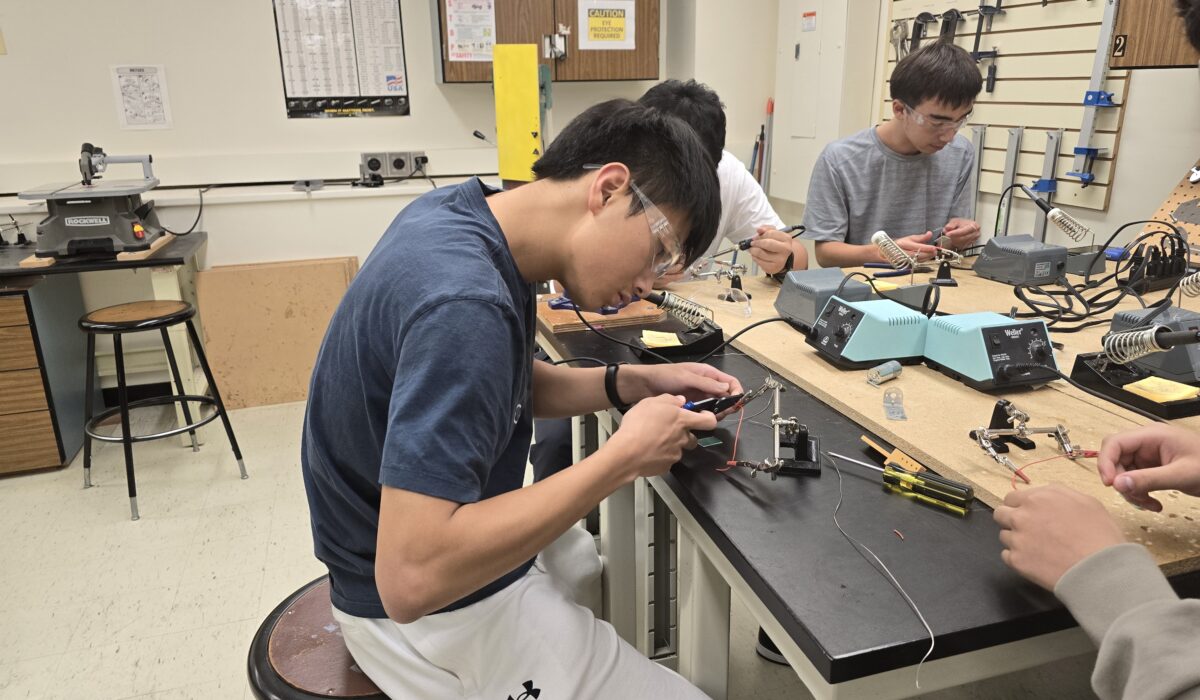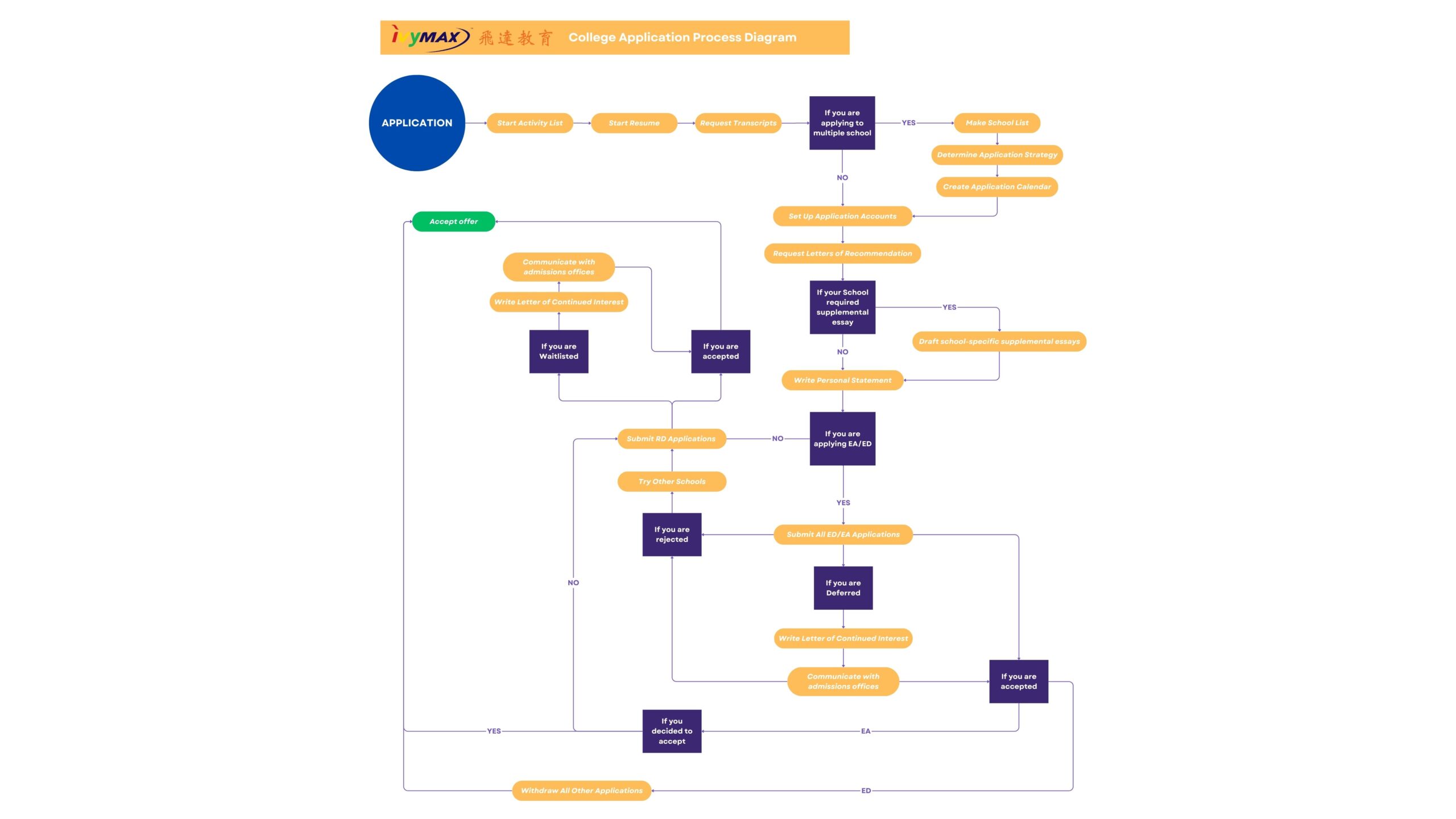The University Application Process:Checklist, Timeline, Actions
Table of Contents
Step-by-Step Application Roadmap
Navigating the university application process can feel overwhelming, especially with so many deadlines, decisions, and documents. This guide delivers a comprehensive, month-by-month breakdown of what students need to do—and when—to stay strategic, organized, and confident through the process. Whether applying Early Decision, Early Action, or Regular Decision, this roadmap ensures you’re prepared at every stage.
Phase 1: Build a Strong Foundation
Timeline: March–April
This early phase is all about laying the groundwork for a cohesive, authentic application. Students begin by reflecting on their academic journey, personal identity, and lived experiences. These reflections will later shape compelling personal statements and interviews. This is also the time to identify core personal values and long-term goals that help guide college selection and voice in essays.
What to Do:
Reflect on personal growth, strengths, values, and challenges.
Begin journaling or using guided prompts to explore possible essay themes.
Review academic performance and create a plan for improvement.
Develop a basic activity list showcasing involvement, leadership, and impact.
For IvyMax students, this phase also includes access to the in-center and online College Application Workshop held during March and April. The workshop covers key topics such as résumé building, college and major research, UC Personal Insight Questions Part 1 and 2, main essays for Common App and Coalition App, understanding the purpose of college essays, writing “Why college” and “Why major” essays, resume writing techniques, and structured essay development strategies.
Phase 2: Preparation & Team Setup
Timeline: May–July
This stage focuses on the logistical preparation required before the application season. Students collect academic records and build test plans. Families and counselors align expectations, while students set up systems to stay organized. Establishing a reliable support network ensures nothing falls through the cracks during this high-pressure period.
What to Do:
Request transcripts and start a professional student resume.
Decide if SAT/ACT need to retake.
Finalize a test prep schedule and register for test dates (if needed).
Create an application calendar with deadlines for each school.
Build a support team: counselors, mentors, teachers, and advisors.
Phase 3: Finalize Your College List & Strategy
Timeline: July–August
Developing a well-rounded college list is a crucial part of the university application process. Students should balance reach, match, and safety schools while considering key factors such as academics, geography, campus culture, and financial cost. At this stage of the application process, students also finalize their application strategies—deciding between Early Decision, Early Action, and Regular Decision based on their readiness and goals.
What to Do:
Deep dive into college research using webinars, virtual tours, and student panels.
Finalize a list of 8–12 colleges: 2–3 reach, 4–6 match, 2–3 safety.
Determine which colleges, if any, to apply to as ED or EA.
Understand ED’s binding nature: admitted students must attend.
Lean toward Regular Decision if more time is needed to improve applications.
Phase 4: Essay Development & Application Accounts
Timeline: August–September
This phase focuses on a critical part of the application process—writing powerful application essays and setting up digital platforms. Students should begin drafting their Common App Personal Statement and school-specific supplemental essays that align with each institution’s values and programs. Managing application portals early in the application process helps streamline future submissions and reduce last-minute stress.
What to Do:
Write and revise the Common App Personal Statement (650 words).
Draft school-specific supplemental essays that showcase fit and passion.
Set up accounts on Common App, Coalition App, UC App, and others.
Input personal, academic, and extracurricular data into platforms.
Request letters of recommendation early; provide resumes to teachers.
Phase 5A: Early Decision & Early Action Submissions
Timeline: October–Early November
As part of the early application process, students applying for Early Decision (ED) or Early Action (EA) must meet early November deadlines. ED is binding—if accepted, students must withdraw all other applications and commit to that institution. In contrast, EA is non-binding, giving students more flexibility within the college application process while still receiving early decisions.
What to Do:
Finalize application materials by October 15–25.
Double-check each school’s requirements—essays, documents, fees.
Submit all ED/EA applications by the November 1 deadline.
Confirm with recommenders and counselors that supporting docs are submitted.
For ED applicants: Have a family discussion about financial commitments.
Phase 5B: Regular Decision Submissions
Timeline: November–January
This is the most common path in the college application process. With Regular Decision deadlines typically falling between January 1 and January 15, students must carefully proofread every part of their application. Accuracy, completeness, and consistency are essential when presenting your academic story and personal narrative to each admissions office within the broader application process.
What to Do:
Submit remaining applications by early January.
Confirm receipt of all documents at each college.
Send SAT/ACT scores if schools require them.
File FAFSA and CSS Profile (priority dates vary by institution).
Save all confirmation emails and keep portal credentials organized.

Why Choose IvyMax for Your Final Application Push?
At this critical stage of the university application process, IvyMax provides strategic, deadline-driven support to ensure every submission is polished and on time. Our expert team works closely with students to refine every detail before the Regular Decision deadlines.
✅ One-on-One Essay Editing: Professional editors review and provide actionable feedback on all draft essays.
✅ Targeted Revisions: Students revise content with precision, ensuring each essay showcases voice, fit, and impact.
✅ Final Quality Check: IvyMax advisors cross-check every section—from personal info to activities—to eliminate errors.
✅ Deadline Accountability: Our counselors make sure each student confirms application submission before the cut-off date.
Whether you’re applying to top UCs, Ivies, or top-50 national universities, IvyMax helps you submit with clarity, confidence, and competitive edge.
Phase 6: Post-Submission Follow-Up & Interviews
Timeline: December–February
After submitting materials, this stage of the application process requires students to remain proactive and engaged. Some colleges may request mid-year grade reports or offer optional alumni interviews. These follow-up actions are valuable opportunities to demonstrate continued academic achievement and reinforce genuine interest in the institution—both critical in a competitive application process.
What to Do:
Prepare for interviews by researching the school and practicing responses.
Ensure submit mid-year reports.
Check school portals for updates or missing documents.
Keep engaging with colleges via events, emails, or optional submissions.
Phase 7: Admission Results & Decision-Making
Timeline: March–April
As decision letters begin to arrive, students transition into one of the most crucial phases of the application process: evaluation and commitment. During this time, academic fit, financial aid offers, campus culture, and long-term career opportunities must all be carefully considered. Making an informed, confident decision by the national deadline of May 1 is a pivotal conclusion to the college application process.
What to Do:
Review acceptance letters, financial aid packages, and merit scholarships.
Participate in admitted student days—virtual or in-person.
Compare key decision factors across schools.
Submit your enrollment deposit by the May 1 national deadline.
Notify other colleges of your decision in a respectful and timely manner.
Phase 8: Waitlist Strategy & Love Letters
Timeline: March–May
Being waitlisted is not the end of the application process. Students still have a real opportunity for admission and should take proactive, strategic steps to express continued interest. This stage of the application process may extend into late spring or even summer, as some colleges admit students off the waitlist when spaces become available.
What to Do:
Write a strong Letter of Continued Interest (LOCI).
Update schools with any recent awards, achievements, or improvements.
Communicate with admissions offices—professionally and respectfully.
Place a deposit at an accepted school while monitoring waitlist status.
Finish Application Process, One Step at a Time
The university application process is far more than submitting forms—it’s a strategic, transformative journey. Staying organized, informed, and focused will help students make decisions that align with who they are and where they want to go. Whether you’re applying early or regular, your roadmap to college starts here—with confidence, clarity, and preparation.
Your last summer break before college applications is especially important. It might just be the turning point in whether or not you get accepted. Colleges aren’t just looking at your grades; they want to see how you spend your free time and what you do when school’s not in session.
If you haven’t mapped out your summer yet, here are a few meaningful extracurricular activities you can still explore to make the most of it.

The Franklin Education Foundation offers the Global Philanthropy Leadership Internship Programs in partnership with IvyMax. These programs are designed to engage high school and college students with leadership potential, offering immersive experiences with underserved communities and learning opportunities from professionals at leading companies and global organizations. This collaboration aims to develop intellectual vitality, enhance interpersonal skills, and instill a strong commitment to global responsibility.

The Franklin Research Internship Program (FRIP) is an intensive, six-week summer program that engages highly motivated, high-achieving high school students in interdisciplinary, university- level research.

The UCI Autonomous Driving Summer Camp, hosted by Franklin Education Foundation, is a two-week STEM program in collaboration with UCI’s Samueli School of Engineering. Adapted from a university course, it offers Grades 10-12 students hands-on experience in autonomous driving, AI programming, and mechanical engineering with UCI professors and graduate mentors.
By submitting this form, you are consenting to receive marketing emails from: IvyMax, 41111 Mission Blvd., Suite 200, Fremont, CA, 94539, https://ivymax.com/. You can revoke your consent to receive emails at any time by using the SafeUnsubscribe® link, found at the bottom of every email. Emails are serviced by Constant Contact
Interested in our program?
Complete the form below and we’ll quickly respond with detailed information, and answers to all your questions!


